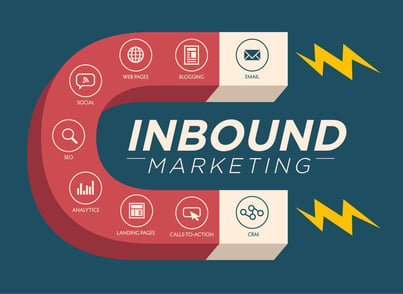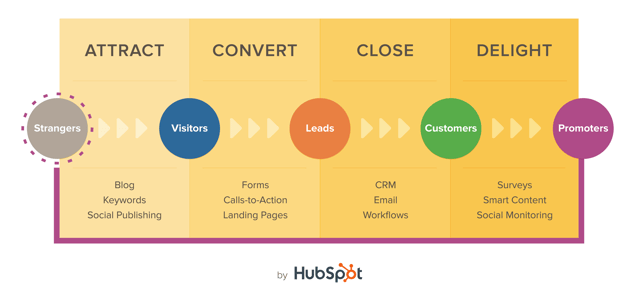As a senior in college at a private university soon to have a communication degree, I can confidently say I never once heard the words ‘inbound marketing’ mentioned in any of my classes or extracurriculars. I landed an internship with Leighton Interactive during my last semester which completely opened my eyes to a whole new sector of marketing I didn’t even know existed. If you’re like I used to be, you might be wondering what the heck inbound marketing is and why should you care?
A communication degree can go a number of different directions, one of them being advertising and marketing, but even that is vague. Inbound marketing could be one of your options and you might not even know it. Check out the rundown below. You might even surprise yourself and find a marketing sector you’re interested in - it's a wide, wide world.
What is Inbound Marketing?
Inbound marketing is like taking traditional marketing and flipping it on its head. Instead of blasting out  information to anyone and everyone, you’re inviting customers to discover your brand organically through blogs, search engines, or social media. Think of this as earning a customer’s interest instead of buying it. Creating content that can solve the problems and address the needs of customers is important, and in turn what will build brand credibility.
information to anyone and everyone, you’re inviting customers to discover your brand organically through blogs, search engines, or social media. Think of this as earning a customer’s interest instead of buying it. Creating content that can solve the problems and address the needs of customers is important, and in turn what will build brand credibility.
Inbound marketing has the inbound methodology at its core. The inbound methodology follows the “buyer’s journey” or the path in which a potential lead becomes a valued customer. The buyer’s journey is important as it gives organizations a way of reaching different types of leads in all aspects of their journey, from people who are just trying to solve a problem with a Google search, to those who know your brand and know you are the only one to help solve that problem. Whether they are unaware of your brand or already considering your brand, you want to always make sure there is content for all types of leads.
What is the Inbound Methodology?
 You want strangers to become promoters of your business. The best way to do that is through the inbound methodology. There are four different steps:
You want strangers to become promoters of your business. The best way to do that is through the inbound methodology. There are four different steps:
Attract
This is the first time people stumble across your website, probably because you have content that answers their question. Whether it’s a blog post, social media, or search engine, you’ve gotten their attention.
Convert
Now it’s time to put on the charm and make them see why you’re the answer to their problem. This is usually through a call-to-action or “CTA.” This will prompt the user to download content like an eBook or offer that will further educate them on the topic they’re searching for.
Close
Congrats! You’ve hooked them and they downloaded content from you. Whether this means they filled out a "Contact Us" form or bought something directly from your website, they're now a customer. Sending them a thank you email linking more relevant content continues to usher them through their “buyer’s journey.”
Delight
You want these people to become promoters; people who are impressed with you and want to tell the world. A common misconception is the customer’s journey stops after they’ve paid you. Don’t forget about them - they are far too valuable to be a past transaction only! Continue to provide smart content that will keep them coming back for more.
Of course, this isn’t where inbound marketing ends - it's never-ending. This is just the beginning. There are tons of inbound marketing resources, training sites, and software (shout out to you, HubSpot) that help dive deep into all inbound marketing has to offer. Let this be a brief introduction to the world of inbound and a stepping stone to begin creating content that matters and turning strangers into valued customers.
